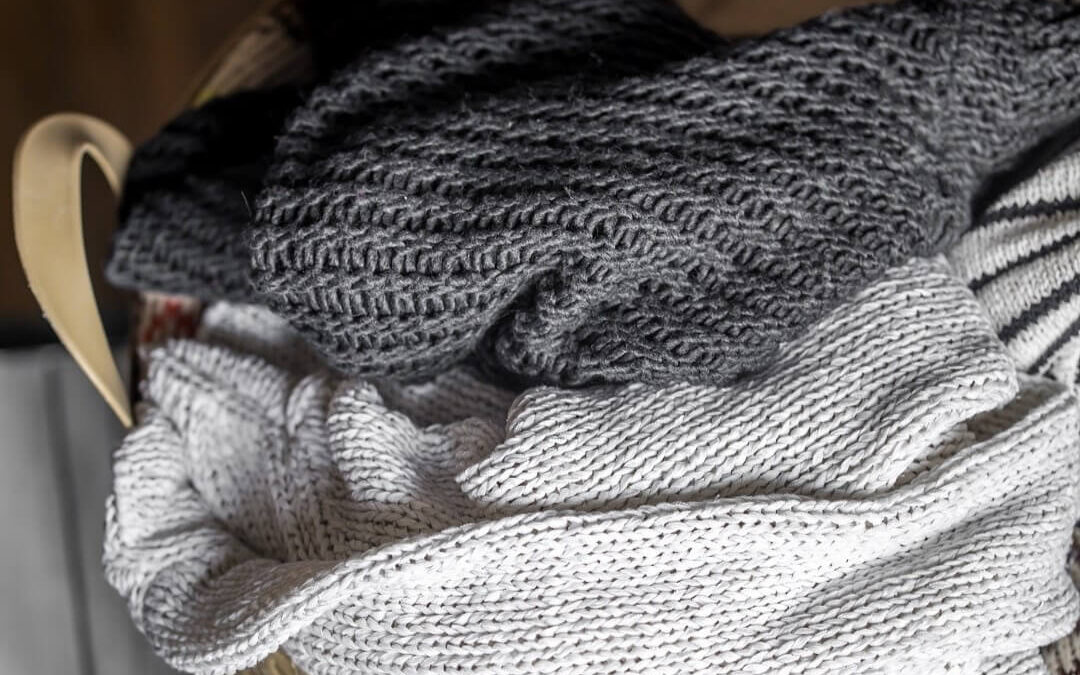If you’ve been gifted a handmade sweater or made one yourself, knowing how to wash knitted sweaters is vital to keeping them for a long time. These garments are so much more special than something you picked up at a store.
Whether it’s a piece lovingly handcrafted by a dear relative, a bespoke item from a local artisan, or even a project you’ve embarked on yourself, every stitch is a testament to skill, patience, and care.
As such, it deserves the best of care in return. Understanding how to wash knitted sweaters and provide ongoing maintenance is crucial to preserving the beauty and longevity of these garments. With the right care, your hand-knit treasures can last for generations.
Understanding Yarn Types: The Basis of Proper Care
Before you consider washing or caring for your knitted items, you need to know what types of yarn were used. The care routine for a delicate silk blend will differ vastly from that of a rugged, pure wool garment.
Materials can range from natural fibers like wool, cotton, silk, and bamboo to synthetic fibers such as acrylic, nylon, and polyester. Each of these materials will react differently to water, heat, and cleaning agents. For example, acrylic yarns can be tossed in the dryer on low, but wool is likely to shrink and become felted.
Always check the yarn label or contact the manufacturer for specific washing and drying instructions. But when in doubt, hand wash and lay it flat to dry.
How to Wash Knitted Sweaters: A Step-by-Step Guide
Washing your knitwear by hand is the safest way to clean these delicate garments. The more gently you can treat your yarn, the better. It may be more time-consuming than popping it into the washing machine, but it’s well worth the effort.
Prepping Your Sweater
Before you wash, always check for spots or stains that may need a bit more attention. Spot cleaning a stained area before a general wash can help ensure the most thorough clean possible.
Choosing the Right Detergent
The detergent you use to wash your knitted sweaters is incredibly important. Use a gentle, pH-neutral detergent designed for delicate fabrics. Specialty wool washes are available, which often contain lanolin – a natural oil found in wool that can help maintain the fiber’s softness and durability.
But honestly, you don’t need to drop a ton of cash on specialty detergents. If you’re looking to cut costs, baby shampoo works just as well!
The Washing Process
- Fill a basin or your sink with lukewarm or cool water.
- Add the recommended amount of your chosen detergent.
- Submerge your sweater and gently agitate the water with your hands to distribute the soap.
- Let the garment soak for about 15-30 minutes.
- Rinse your sweater gently in cool water, taking care not to stretch or wring it out.
- Press excess water out of the sweater by rolling it in a clean, dry towel.

Drying and Blocking: Preserving the Perfect Fit
Once you’ve washed your knitted sweater, the drying process is just as important. Never wring out your knitted items, as this can distort the shape and potentially damage the fibers.
Instead, after using the towel to remove excess water, lay the garment flat on a clean, dry towel and reshape it as needed. This process, known as blocking, helps the garment maintain its shape and size.
Let your sweater dry overnight or perhaps for the next day or two, depending on how thick the yarn is. Don’t remove it until it’s completely dry.

The Art of Depilling and Steaming
Over time and with regular use, most knitted items will start to show some wear in the form of pills – those annoying little balls of fiber that form on the surface. A fabric comb or a pill shaver can help refresh your sweater and keep it looking its best.
Steaming is another beneficial step in how to wash knitted sweaters and maintaining them. It can help relax the fibers, smooth wrinkles, and maintain the overall shape of the garment. Be sure to follow the manufacturer’s instructions for steaming, as different yarns may have varying heat tolerances.
Freshen Between Wears
It’s not necessary (or advisable) to wash your knitted sweater every time you wear it. That will certainly speed up the aging process of your sweater.
Instead, consider freshening it up between washes. A fabric freshener spray can help refresh the garment, or you can air it out by hanging it in a well-ventilated area. You can also store it with a dyer sheet folded inside it.
Storing Your Knitted Sweaters
Proper storage is the final step in caring for your hand-knitted sweaters. Always store knits folded rather than on hangers. Hanging them will cause them to lose their shape since yarn is heavy and tends to pull downward. To prevent stretching or distortion, fold your knitwear.
Choose a cool, dry place away from direct sunlight, which can cause colors to fade. And if you’re packing away sweaters for the season, consider using breathable cotton bags, which protect from dust while allowing the garments to breathe.
Don’t pack your sweaters away with mothballs. They’re not just stinky but also toxic. But you can still keep moths and larvae away from your precious fibers. Pack cedar blocks amongst your knitted garments!
Repairing Snags and Loose Threads
Finally, remember that caring for your knitted items also includes a bit of ongoing maintenance. If you notice a snag or a loose thread, don’t pull it! Instead, use a crochet hook or a similar tool to pull the snag through to the inside of the garment, preserving the overall appearance.
This will also prevent the loose yarn from getting stuck on something and causing more damage to your sweater.

